Mining – Environmental and Social Challenges
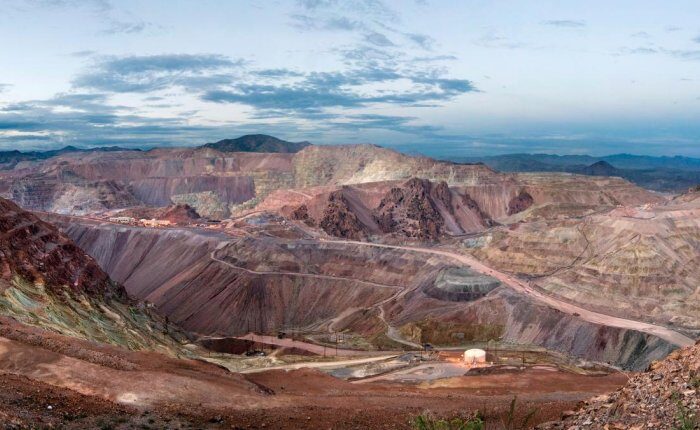
Did you know that materials obtained from mining support 45% of the world’s economic activities? Yet large scale mining has resulted in significant environmental and social problems. The future of mining must thus focus on the triple bottom line – profits, people, and the planet – and not merely be a profit seeking activity. Mining activities have major impacts on 11 of the 17 UN’s Sustainable Development Goals (SDGs). The mining sector is especially important for Canada by contributing (according to The Mining Association of Canada website) $97 billion to Canada’s economy in 2018 (about 5% of Canada’s nominal GDP) and also where local mining companies engage in mining exploration and extraction operations worldwide.
Background
Mining is the extraction of material from the ground. Mined materials consist of metals (e.g. copper, gold, or iron), industrial or construction aggregate materials (e.g. sand, gravel), and energy materials (e.g. coal). Mining operations seek to collect materials from the earth for subsequent processing to extract the desired substance from the base deposit.
The mining process consists of 4 major stages:
1. Exploration – determining sites which contain valuable deposits of the material to be mined and then determining the extent of the valuable material
2. Development – building the mine of which there are several design options chosen based on the nature of the deposit
3. Operations – involves extracting the materials from the ground, removing and storing earth, rocks and waste and processing and transporting materials to sites for further processing
4. Closure and Monitoring – land lost to mining must be rehabilitated to ensure that the area is environmentally safe. Periodic monitoring may be needed to ensure that the rehabilitation is not threatened over time.
It is important to note the types of mines – the choice of which can have a significant environmental impact.
Surface (open pit) mining – the vegetation and sediment cover is removed exposing the deposit
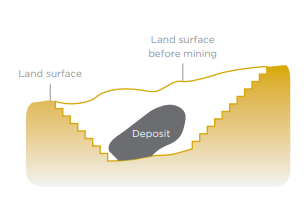
Underground mining – a narrow shaft is constructed to access the deposit – this reduces the impact on the land surface
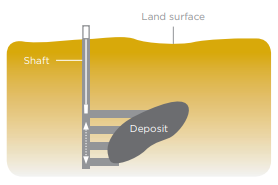
Deep sea mining – a pipe is used to extract deposits beneath the seabed floor with the use of a support vessel
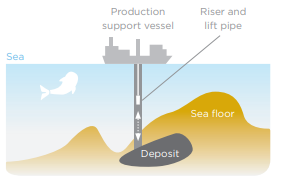
In-situ leach mining – an injection well is used to inject chemicals into a deposit to assist in extracting the useful ore (material from the deposit which possesses the valuable substance) from a recovery well
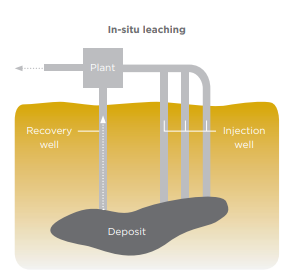
Heap leaching – the extracted ore is placed on a surface protected with lining at the base and subsequently, chemicals are applied to separate the desired materials from the ore
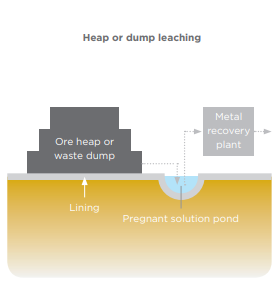
The following sections discuss important environmental and social challenges from mining along with examples of potential solutions noted from the mining research community.
Environmental Challenges Due to Mining – Breach of Waste Storage from Tailings Ponds
Metal mining generates 15 billion tonnes of waste per year which is 10 times global municipal waste. It is estimated that mine waste covers about 100 million hectares of land globally; this land is not usable in the long term.
Mining waste includes waste rock (i.e. the material in the ground which does not contain any valuable substance unlike the ores) and tailings (i.e. the remains after extracting the valuable concentrate material from an ore). Making sure that the waste is kept away from ground and surface water sources during mine operation and after mine closure is important to avoid environmental disasters. For tailings, this is typically done by the construction of a tailings dam pond to store this waste material. A recent major disaster of a tailings dam breach occurred at the Samarco Mineração Mine in Brazil in 2015 where 50 million cubic metres of mudflow containing toxic mining waste flooded nearby communities making them uninhabitable. The toxic substances also found a way into one of Brazil’s largest rivers resulting in the loss of vast amounts of plant and animal life along a 650-kilometre stretch. The release of toxins resulted in making water undrinkable for hundreds of thousands of people. Another example is the breach of the Mount Polley tailings dam in British Columbia, Canada due to its construction on weak foundations. This resulted in the release of an estimated 25 billion litres of contaminated materials into local drinking water supplies and spawning grounds for sockeye salmon. Globally the number of tailings dam failures has doubled in the past 20 years from eight between 1999 and 2003 to 16 between 2014 and 2018. Researchers are advising the use of methods that reduce or eliminate water in the tailings such as dry stack tailing methods – this is a more expensive solution but is more environmentally friendly. Researchers are also advising greater fines to reduce tailings dam pond breaches.
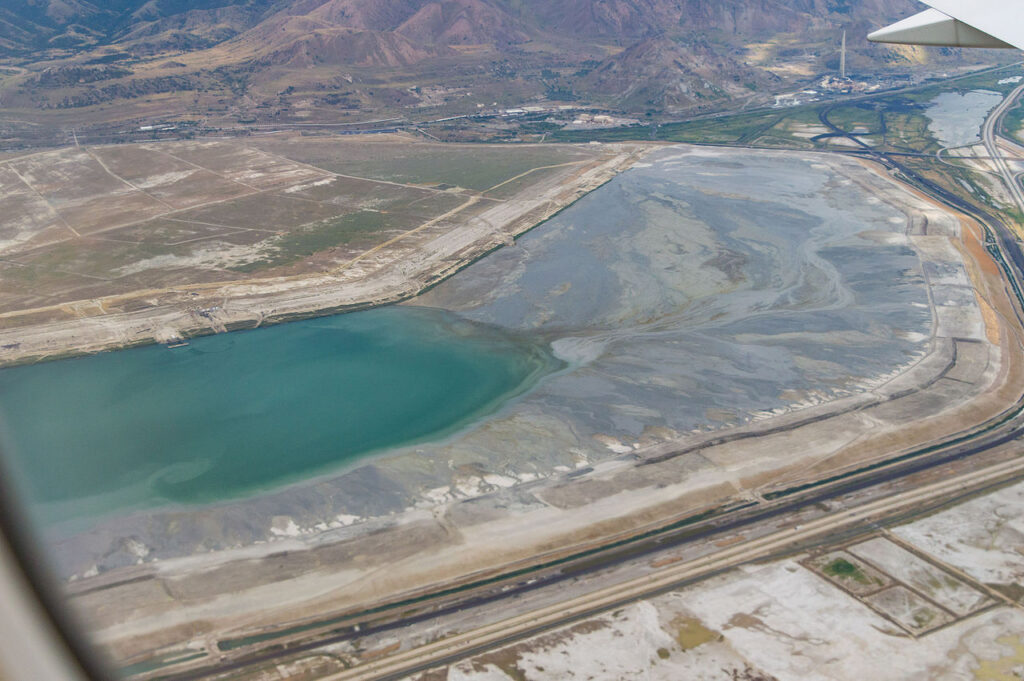
Environmental Challenges Due to Mining – Acid Mine Drainage (AMD)
Waste rock and tailings, when present with sulfides (which happens often in mine settings) and air as well as water result in the formation of sulfuric acid. The acidic conditions increase the solubility of trace toxic chemicals such as Lead, Arsenic, and Aluminium present in mining waste – changing their state from solid to liquid and making these toxic substances more easily absorbed by plant and animal life. The toxic substances may be passed up the food chain to affect humans as well. In the US, one estimate from 1991 says that about 22,000 km of streams and 180 000 acres of freshwater reservoirs are affected by acid mine drainage costing between $32 billion and $72 billion USD to remediate. In Canada, an estimate for cleanup of mine drainage sites from the year 2000 is between $2 billion and $5 billion CDN.
Acid Mine Drainage can be best minimized through preventive measures that prevent air and water from interacting with the sulfide material. Techniques include physical, biological, and chemical methods. For example, physical barriers such as dry plastic liner covers which protect the sulfide materials, bacterial inhibition to kill bacteria which aide in the formation of sulfuric acid, chemical treatment of contaminated material to reduce its acidity and thus help block the release of toxic metals, and desulfurization which separates sulfides from waste rock and tailings leaving remains that are non-acid producing. Unfortunately, additional research is needed to make AMD reduction solutions technologically mature and so AMD reduction is still an important research question.
Environmental Challenges Due to Mining – Impacts on Biodiversity
According to the UN Environmental Program (UNEP) “Poorly managed mining operations can pollute the environment and damage the biodiversity that underpins economies, provides food, fuel, building materials and freshwater, and helps to mitigate the impacts of climate change and natural disasters.”
In addition, a World Bank report says that large scale mining in forest areas has the potential to affect 30% of the world’s forests – forests are the world’s most biodiverse areas. Also, the same report notes that mining is taking place in some of the most ecologically diverse forest areas in the world.
One way to partition the impacts of mining on biodiversity is by looking through the lens of geographic scales consisting of three categories (there is some overlap between the categories)
1. The mine site itself
2. The region surrounding the mine site and
3. Globally
Impacts on biodiversity at the mine itself include:
1. Clearing of native forests and vegetation – performed during exploration phase for deposit evaluation and also during mine development (more so for an open pit mine where lots of land needs to be cleared and excavated to retrieve the deposit)
2. extent or lack of proper site rehabilitation – an example is the impact of improperly closed and sealed waste facilities which can result in toxic chemicals leaching into nearby water sources putting humans and animals at risk
Regional impacts on biodiversity include:
1. Fragmentation of the forest habitats – habitat fragmentation is the breaking of forests into pieces separated by roads, agricultural plots and other human developments – according to research forest fragmentation reduces biodiversity by 13 to 75% and damages key ecosystem functions by decreasing biomass and altering nutrient cycles
2. Rainfall runoff from disturbed lands leading to soil erosion, turbidity, siltation or pollution of local streams – for example, release of sediment into streams can make it harder for light to penetrate making it harder for fish to find food
Global impacts on biodiversity include
1. Climate change – mining releases greenhouse gas emissions which affects biodiversity worldwide
2. Presence of invasive species – movement of people around the world can also result in the movement of species from one environment to another
Recent research indicates that in the near future mining activities will take place in highly biodiverse areas due to depletion of higher grade ores in existing accessible areas and competing land uses in non-conservation areas. This will further impact biodiversity.
To improve matters the UN is recommending the use of better performance-based metrics which can assist companies in determining and reducing their impact on biodiversity. Research is also saying that improving our understanding of the impacts of mining on biodiversity is needed by 1) better understanding how public policies related to mining (such as certification schemes and industry standards) are impacting biodiversity, 2) how evolving mining technologies positively or negatively affect biodiversity and 3) better modelling of the impacts of mining over temporal (1 year, 10 years, 100 years, 1000 years) and spatial scales (i.e. local at the site itself, regional, and global).
Environmental Challenges Due to Mining – Water Consumption
Significant quantities of water are used in the different stages of mining. To provide some perspective on mining water consumption the production of steel from iron ore alone is stated to be about 1.1% of total global water withdrawals with about 750 million tonnes of steel produced per year. Activities requiring or extracting water include the transportation of ore and waste through slurries, de-watering of mine pits and shafts to ensure the ore can be reached without water getting in the way, keeping dust down during mining, washing equipment, and cooling systems. This consumption of water can result in conflicts with local communities that rely on limited water supplies. A 2013 survey from mining industry representatives indicated that 64% indicated that they have experienced unfavourable water-related business impacts in the past five years. To minimize the water consumption mining companies have been putting into practice reduce, reuse, and recycle water policies. In addition, sustainable mining initiatives have been pushing for reduced water consumption. For example, consider the 2016 – 2021 CanmetMINING Green Mining Initiative from Natural Resources Canada which emphasizes research into water recovery and recycling for processes that separate useful concentrate from ore materials and also research which determines how to minimize the release of harmful process waters into the natural environment.
Environmental Challenges Due to Mining – Impacts on Air and Soil
According to research published in the WIT Transactions on Ecology and the Environment mine operations contribute to air pollution through the release of dust from “blasting, handling, processing or transporting of materials, or can be suspended from disturbed areas or waste disposal facilities, including waste rock and tailings, by wind erosion”. In addition, mineral processing results in the release of Sulfur Dioxides and Nitrogen Oxides which are air pollutants that cause respiratory illnesses. These substances can be transported over thousands of kilometres, transformed in the atmosphere, and fall to the ground resulting in soil acidification. Acidification of soils has been noted to result in the decline of forests. Other toxic pollutants such as Mercury, Lead, Arsenic are released into the air from some mining operations and can settle downwind into soils resulting in absorption by vegetation and the subsequent move of these toxins up the food chain.
Research has also been performed on soils near a coal mine showing acidic soils, a reduced level of bacterial activity, and a reduced level of Nitrogen, Phosphorous as well as Potassium in relation to normal values resulting in significantly reduced soil fertility.
Air pollution from mining operations can be reduced through various methods including the use of road watering to reduce dust being released into the air and mining technology which reduces the release of harmful chemicals into the atmosphere such as Sulfur Dioxide (produced when processing mineral ores to get valuable concentrate material). To reduce impacts of mining on soils the American Geosciences Institute advocates soil treatment methods in which contaminated soil is moved to a separate environment. This relocation of toxic soils is an expensive procedure.
Environmental Challenges Due to Mining – Greenhouse Gas Emissions
Mining activities produce greenhouse gases through energy consumption for day to day operations, processes that refine ores to produce valuable materials, and through the destruction of forests to obtain and transport ores. According to recent research the mining of just bauxite, copper, gold, and iron ore alone contributes between 0.4 and 0.7 percent of total Carbon Dioxide emissions and between 1.3 and 2 percent of total industrial emissions. As future ores are expected to be more difficult to reach in relation to the past climate emissions due to mining are also expected to increase. Climate change itself can contribute to making mining operations more difficult due to extreme weather events and transportation challenges due to icy roads being risky for usage.
Companies around the world have started to reduce their climate change emissions by using renewable energy sources such as wind, geothermal, and solar. More progress is needed in this direction and governments around the world should encourage greater investments by mining companies in renewable energy sources.
Social Challenges Due to Mining
When it comes to social challenges due to mining, 453 violent conflicts were noted between 2002 and 2013 worldwide due primarily to environmental, economic, health, and safety issues. A recent research report written by the Canadian International Resources and Development Institute entitled “The Rise in Conflict Associated with Mining Operations: What Lies Beneath?” tries to ascertain reasons for why conflict incidents due to mining have increased significantly between 2000 and 2013. The period from 2002 to 2012 was noted to have a significant increase in prices and demand for mined materials and also a significant increase in conflict incidents due to environmental and land matters.
Based on the review the most frequent cause of conflict was “environmental (28.1%), followed by economic (12.2%), consultation (10.0%), health & safety (9.5%) and land issues (7.6%). The research report also identifies the nationalities of the companies associated with mining-related conflicts. According to the report “The 167 mining related conflict incidents recorded in 2012 and 2013, involved mining companies headquartered in 33 different countries. The top country by a significant margin is Canada (30.3%), followed by the U.S. (8.6%), Australia (7.6%), South Africa (7.6%), and the U.K. (7.6%). The figure for Canada is not surprising given the long-term, dominant presence of Canadian mining companies worldwide.”
The authors identified best practices to avoid conflicts in the first place. The results indicated that conflict risk mitigation can be performed by ensuring for all stakeholders a) participation in decision-making, b) negotiation and agreements, and c) transparency and accountability in revenue management and community-led development.
Next Steps
Addressing these significant environmental and social challenges require proper research initiatives, policies, and standards – contributed to by all stakeholders including mining companies, governments, local communities affected by mining operations, non-governmental organizations, scientists, and others. Sustainable mining also called green mining initiatives are being adopted and should continue to be pursued. For instance, consider the Green Mining research initiative from Natural Resources Canada which focuses on 4 research pillars: 1) footprint reduction to reduce waste, improve energy efficiency to reduce emissions, minimize water consumption and reduce the release of toxic chemicals; 2) mine waste management – preventing and alleviating impacts created by mineral processing; 3) mine closure and rehabilitation – to develop options to rehabilitate mining waste and mining tailings; 4) Ecosystem Risk Management pillar – Stakeholders are developing a more holistic study of the biochemical reactions created by metals released after processing and their interactions with ecosystems. This research approach is thought to be a way for Canada to produce minerals and metals while at the same time leave behind clean soils, clean water, and healthy ecosystems for future generations.
Secondly, mining operations must look into Circular Economy policies (also sometimes called zero waste policies) which view mine waste as raw material and thus made use of. Also, to make the maximum value of all mined materials processes such as reuse and/or recycling of these materials should be encouraged after product usage. To do this all products using mined inputs must be designed such that these materials can be reused or recycled after initial product use. This will reduce the need to go after difficult to reach ores and thus reduce the total environmental footprint of mining.
Third, international standards such as the Initiative for Responsible Mining Assurance (IRMA) need to be approved into law by countries and enforced. These standards can ensure sustainable environmental and social methods for mining. According to their website “IRMA offers true independent third-party verification and certification against a comprehensive standard for all mined materials that provides ‘one-stop coverage’ of the full range of issues related to the impacts of industrial-scale mines.”
The environmental responsibility component of the IRMA standard includes standards for water management, waste and materials management, air quality, greenhouse gas emissions, and biodiversity. The social responsibility component includes standard areas for fair labour and terms of work, occupational health and safety, community health and safety, and cultural heritage.
As individuals, we need to press our leaders for proper initiatives, policies, and standards to ensure that mining supports the overall shift towards a sustainable future while at the same time resulting in minimal damage to our natural environment and to people.
